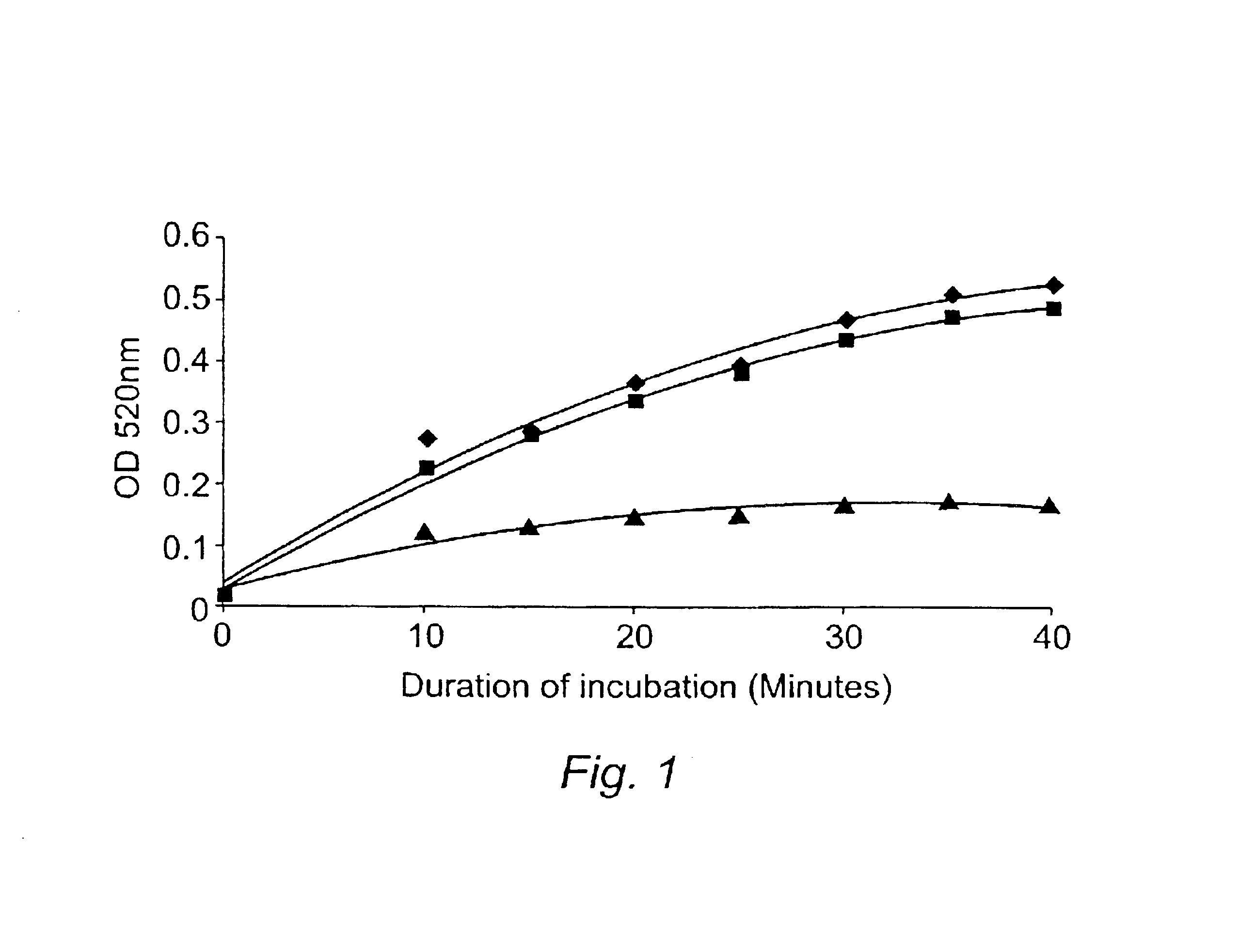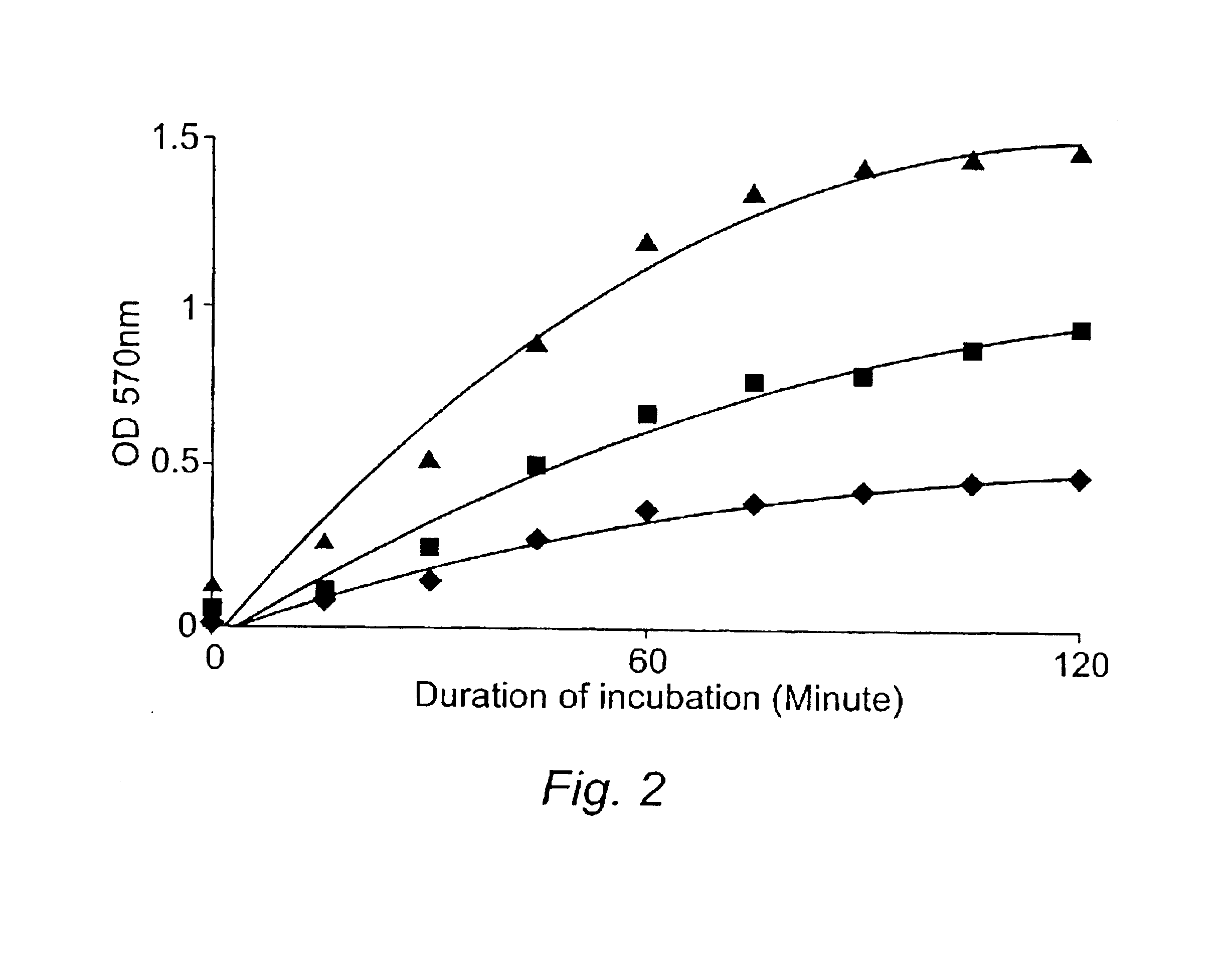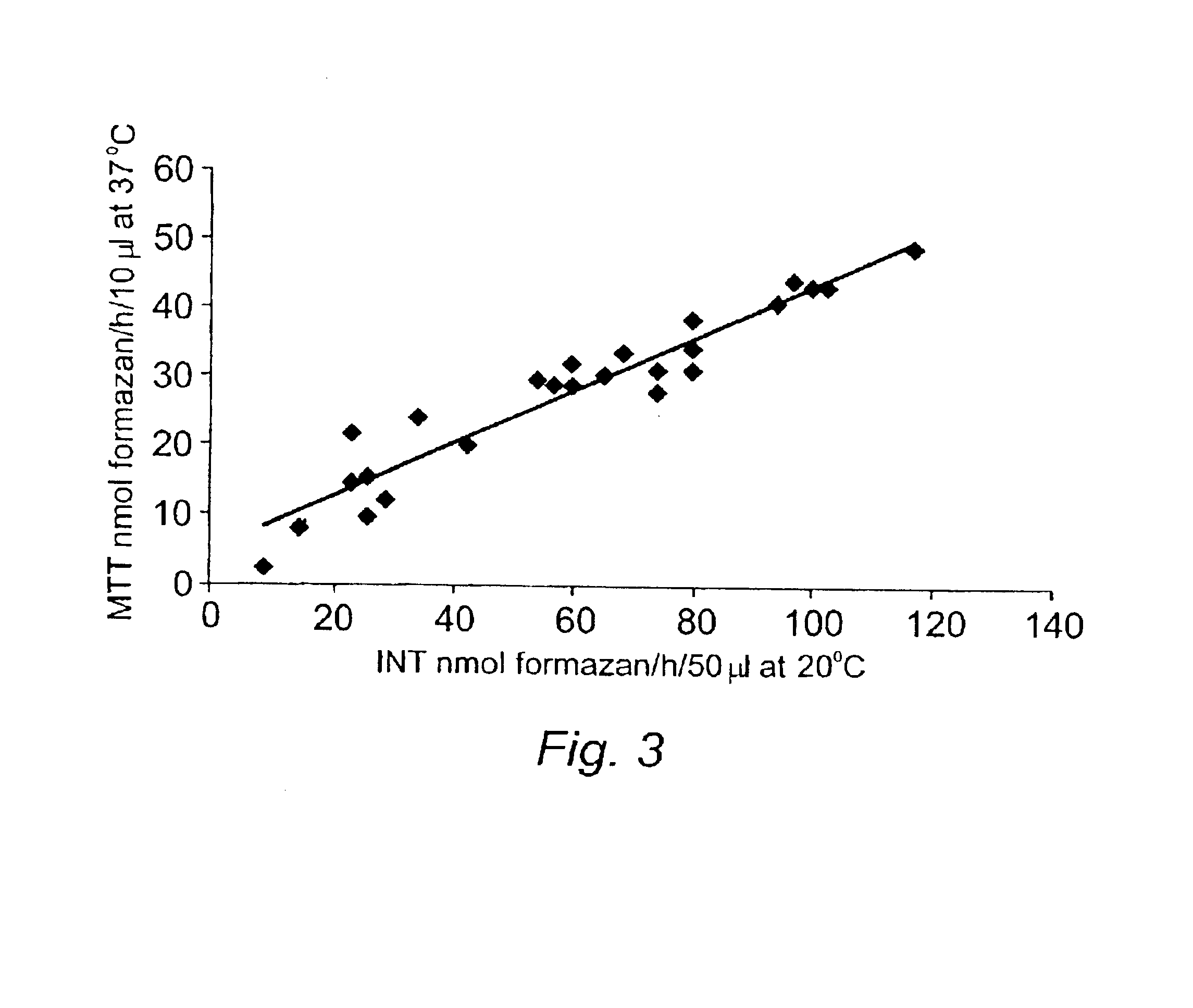Method for assessing fowl sperm quality
a technology for assessing fowl sperm and quality, applied in the field of assessing fowl sperm quality, can solve the problems of poor agreement between operators, lack of robustness required for use on the farm, and the need for laboratory facilities such as centrifuges and/or lack of robustness
- Summary
- Abstract
- Description
- Claims
- Application Information
AI Technical Summary
Benefits of technology
Problems solved by technology
Method used
Image
Examples
example 2
Assay with MTT
In the standard Triton-solubilised assay, around 44% more colour was developed by MTT reduction (at OD520) compared to that of INT (at OD520) at the same concentration. When 10% SDS in 0.1 mol / l HCl was used to solubilise the formazan product, the colour produced by MTT formazan was quenched. However, when the pH of the solution was raised to about pH 6.0 by addition of any suitable alkaline product e.g. NaOH, this colour was restored. Indeed, if 10% SDS in 0.01 mol / l HCl at pH 6.0 MTT-formazan colour development was good and the sperm suspensions solubilised efficiently: when 10 l semen was used in the assay, the loss of OD520 after centrifugation was only 2.2% (mean of 2 results). This increased to 4.0 and 6.7% when 15 and 20 l semen were used, respectively.
A modification to this protocol was made to determine the most effective pH for colour development; in the modified protocol, sperm was added to reaction mixtures of different concentrations of HCl, and therefore ...
example 3
Effect of KCN, PMS, MTT and Calcium on INT- and MTT-reduction Assays
The addition of 20 nmol KCN to the MTT-reduction assay above increased formazan production by only 13.8% and raising the cyanide content of the assay mix up to 5-fold increased this to a maximum of 31%. Conversely, during a 60-min assay, the addition of 2 nmol KCN to an INT-reduction assay increased the colour production 4.2-fold more than the effect of a similar addition to an MTT-reduction assay performed under the same conditions.
The addition of 9.9 nmol PMS increased the rate of MTT-formazan production by 22.9% and increasing the amount of PMS by up to three-fold only reduced the rate of formazan production.
The addition of 200 nmol MTT to the assay increased the rate of formazan production by 20% compared to 100 nmol and further increases in MTT did not increase the assay rate further.
The addition of 4 mol calcium chloride to the MTT assay only increased the rate of MTT-formazan production by 5.7% (mean of 6 ass...
example 4
Effect of Sperm Concentration and Time of Incubation on MTT-reduction Assay
The development of colour during incubation of samples with different sperm concentrations is shown in FIG. 2. Within the range of semen volumes of 10 to 40 l (approximately 40 to 160 million spermatozoa), the assay showed a linear development of colour over 60 min. The rates of colour development over this period, at 0.37, 0.68 and 1.15 OD units per h, were highly correlated with the semen volume added to the assay (r=0.96).
PUM
| Property | Measurement | Unit |
|---|---|---|
| pH | aaaaa | aaaaa |
| pH | aaaaa | aaaaa |
| pH | aaaaa | aaaaa |
Abstract
Description
Claims
Application Information
 Login to View More
Login to View More - R&D
- Intellectual Property
- Life Sciences
- Materials
- Tech Scout
- Unparalleled Data Quality
- Higher Quality Content
- 60% Fewer Hallucinations
Browse by: Latest US Patents, China's latest patents, Technical Efficacy Thesaurus, Application Domain, Technology Topic, Popular Technical Reports.
© 2025 PatSnap. All rights reserved.Legal|Privacy policy|Modern Slavery Act Transparency Statement|Sitemap|About US| Contact US: help@patsnap.com



